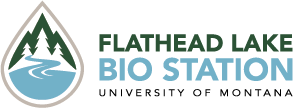Water Quality Standards
Water Quality Standards
What are Water Quality Standards?
Water quality standards (WQS) are provisions of state, territorial, authorized tribal or federal law approved by EPA that describe the desired condition of a water body and the means by which that condition will be protected or achieved. Water bodies can be used for purposes such as recreation (e.g. swimming and boating), scenic enjoyment, and fishing, and are the home to many aquatic organisms. To protect human health and aquatic life in these waters, states, territories and authorized tribes establish WQS. WQS form a legal basis for controlling pollutants entering the waters of the United States.
Core Components of WQS
Water quality standards consist of three core components. This includes designated uses of a water body, criteria to protect designated uses, and antidegradation requirements to protect existing uses and high quality/high value waters.
States, territories and authorized tribes also have the choice of including additional components in their water quality standards such as general policies and WQS variances.
Why Does Montana Have Water Quality Standards?
Water Quality Standards
- Protect water resources for uses such as fishing, swimming and other recreation, and sustaining fish, bugs, plants, and other aquatic life
- Are a measure to identify polluted waters or healthy waters in need of protection
- Guide the limits set on what regulated facilities can discharge to surface water
States either develop their own criteria or implement federal criteria for evaluating water quality. These criteria must accurately reflect the latest scientific knowledge. They are based solely on data and scientific judgments about pollutant concentrations and their effects on the environment, aquatic life, and human health. Montana water quality criteria include both numeric and narrative criteria. Water quality criteria for each use class are detailed in the Montana Code Annotated.
How are Water Quality Standards Developed?
Each state, territory and authorized Tribe has its own legal and administrative procedures for adopting water quality standards. In general, standards are developed using a work group process or informal public meetings and are eventually proposed for public comment.
States, territories and authorized Tribes then begin a public participation process that includes public hearings regarding the proposed standards. The proposed water quality standards and supporting information are made available to the public prior to the hearing.
States, territories and authorized Tribes must adopt water quality criteria with sufficient coverage and of adequate stringency to protect designated uses. In adopting criteria to protect the designated use, states, territories and authorized Tribes may:
- adopt EPA recommended criteria;
- adopt unique criteria to reflect site specific conditions; or
- use other scientifically-defensible methods to develop their own criteria.
Federal Review Process
EPA must review and approve or disapprove each submission from a state, territorial, or authorized Tribe. Proposed water quality standards must be approved by EPA before they can be used as the basis for actions under the Clean Water Act, such as establishing water quality-based effluent limitations or total maximum daily loads (TMDLs). In certain situations, EPA also consults with tribal governments as well as other federal agencies under the Endangered Species Act.
Water Quality Standards Components
Water quality standards consist of several parts:
- Beneficial uses — Identify how people, aquatic communities, and wildlife use our waters
- Numeric standards — Amounts of specific pollutants allowed in a body of water and still protects it for the beneficial uses
- Narrative standards — Statements of unacceptable conditions in and on the water
- Non degradation protections — Extra protection for high-quality or unique waters and existing uses
Numeric Criteria
Numeric criteria define precise, measurable concentrations of pollutants that if exceeded would harm the use. Montana’s numeric water quality criteria are published in Circular DEQ-7 and Circular DEQ-12A.
Montana also has Nutrient Standards Variances which are published in Circular DEQ-12B.
Narrative Criteria
Some pollutants have narrative water quality criteria, which are statements (instead of specific quantities) that describe the desired water quality condition in terms of allowable ranges and maximums (e.g., water pH and temperature) or in terms of specific variation from natural conditions (e.g., water turbidity and color). Each use class defined in the rule has narrative criteria, and some narratives define an allowable change from naturally-occurring conditions. Naturally-occurring conditions are determined by reviewing historical data for a waterbody, if available, or by comparing conditions with a reference waterbody, an unaltered or otherwise in its most natural condition.
For more information: Montana Code Annotated (MCA 75-5) Water Quality Classification & Standards
---
Resources
Montana Department of Environmental Quality Circular DEQ-7: Montana Numeric Water Quality Standards
- This document contains numeric water quality criteria for Montana surface and ground waters.
DEPARTMENT CIRCULAR DEQ-12A - Montana Base Numeric Nutrient Standards
- This document contains information pertaining to the base numeric nutrients standards and their implementation. This information includes the standards’ concentration limits, where the standards apply, and their period of application.
Ecoregion Download Files by State - Region 8 | US EPA
- Ecoregions denote areas of general similarity in ecosystems and in the type, quality, and quantity of environmental resources; they are designed to serve as a spatial framework for the research, assessment, management, and monitoring of ecosystems and ecosystem components. Ecoregions are directly applicable to the immediate needs of state agencies, including the development of biological criteria and water quality standards and the establishment of management goals for nonpoint-source pollution.
Exhibit6.pdf
- History of Montana Numeric Nutrient Standards Development
Overview of Montana’s Nutrient Criteria Implementation Process
- Numeric Nutrient Standards and the Methods Montana DEQ Uses to Implement Them presented by Michael Suplee
Water Quality Standards Regulations: Montana | US EPA
- Water Quality Standards Regulations for the state of Montana

